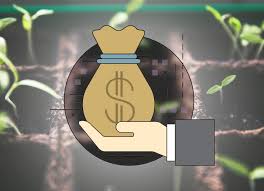In an era where sustainability is paramount, the need for financing solutions to support greenhouse projects has never been more pressing. As the world grapples with climate change, investing in greenhouse financing not only fosters environmental responsibility but also presents lucrative opportunities for investors. In this comprehensive guide, we delve into the nuances of greenhouse financing, exploring its significance, available options, and the potential for sustainable returns.
Understanding Greenhouse Financing
Greenhouse financing encompasses a range of financial mechanisms designed to support projects aimed at reducing carbon emissions, enhancing energy efficiency, and promoting sustainable practices within the agricultural and industrial sectors. These projects often involve the construction or retrofitting of greenhouses, adoption of renewable energy technologies, and implementation of eco-friendly practices.
The Significance of Greenhouse Financing
The urgency to mitigate climate change has propelled greenhouse financing to the forefront of sustainable investment strategies. By facilitating the development of greenhouse gas reduction projects, financing initiatives play a crucial role in accelerating the transition to a low-carbon economy. Moreover, they contribute to job creation, technological innovation, and the preservation of ecosystems, thereby fostering long-term economic and environmental sustainability.
Available Financing Options
A variety of financing options are available to support greenhouse initiatives, catering to the diverse needs of project developers and investors:
- Grants and Subsidies: Government agencies, international organizations, and philanthropic foundations offer grants and subsidies to support greenhouse projects, providing funding for research, development, and implementation.
- Loans and Credit Facilities: Financial institutions provide loans and credit facilities tailored to greenhouse projects, offering favorable terms and conditions to encourage investment in sustainable initiatives.
- Carbon Markets and Offsets: Carbon markets enable the trading of carbon credits, allowing businesses to invest in emission reduction projects and offset their carbon footprint.
- Public-Private Partnerships: Collaborative ventures between governments, businesses, and non-profit organizations facilitate the mobilization of resources and expertise for greenhouse projects, leveraging shared responsibilities and benefits.
- Green Bonds: Issued by governments, corporations, and financial institutions, green bonds raise capital for environmentally friendly projects, including greenhouse initiatives, by earmarking proceeds for sustainable investments.
Challenges and Opportunities
Despite the growing momentum behind greenhouse financing, several challenges persist, including regulatory uncertainties, financial risks, and market volatility. Nevertheless, these challenges also present opportunities for innovation, collaboration, and strategic investment. By addressing barriers and leveraging emerging trends, stakeholders can unlock the full potential of greenhouse financing, driving sustainable development and creating lasting value.
Case Studies and Success Stories
Examining real-world examples of greenhouse financing can provide valuable insights into best practices, lessons learned, and success factors. Case studies highlight the diverse applications of financing mechanisms across different sectors and regions, showcasing innovative approaches and measurable impact.
- Solar-Powered Greenhouses: Integrating solar panels into greenhouse structures enables off-grid operation, reducing energy costs and carbon emissions while enhancing productivity and resilience.
- Community-Supported Agriculture (CSA) Initiatives: Community-based financing models, such as CSA programs, empower consumers to invest directly in local farming operations, fostering food security, environmental stewardship, and social cohesion.
- Corporate Sustainability Initiatives: Leading corporations are increasingly committing to sustainability goals and incorporating greenhouse projects into their business strategies, driven by consumer demand, regulatory requirements, and long-term competitiveness.
Conclusion
In conclusion, investing in greenhouse financing represents a strategic opportunity to align financial interests with environmental objectives, driving positive change and sustainable development. By embracing innovation, collaboration, and responsible investment practices, stakeholders can harness the power of finance to build a greener, more resilient future for generations to come. Whether you’re a government agency, financial institution, corporate entity, or individual investor, now is the time to seize the potential of greenhouse financing and invest in a better tomorrow.


